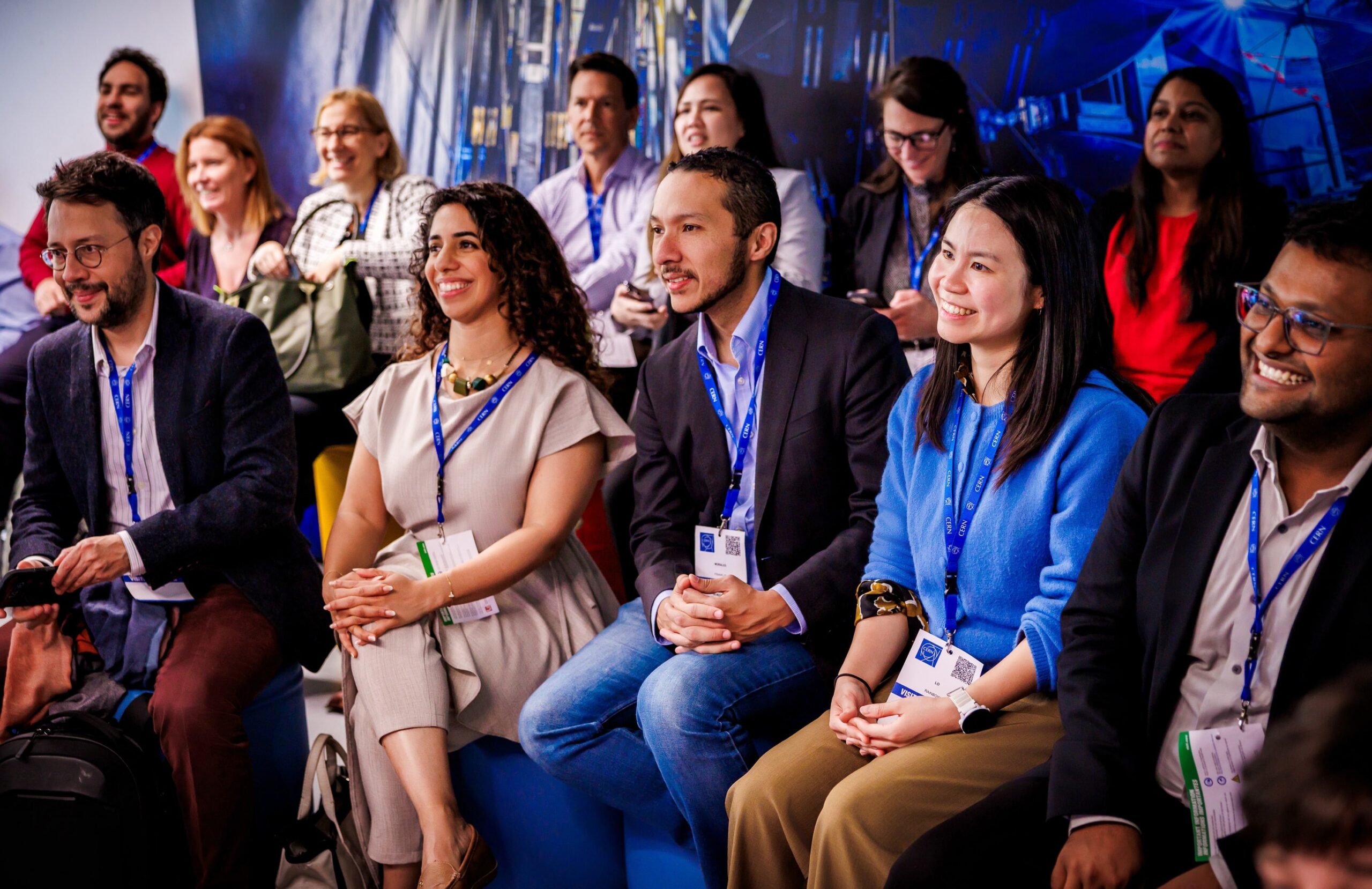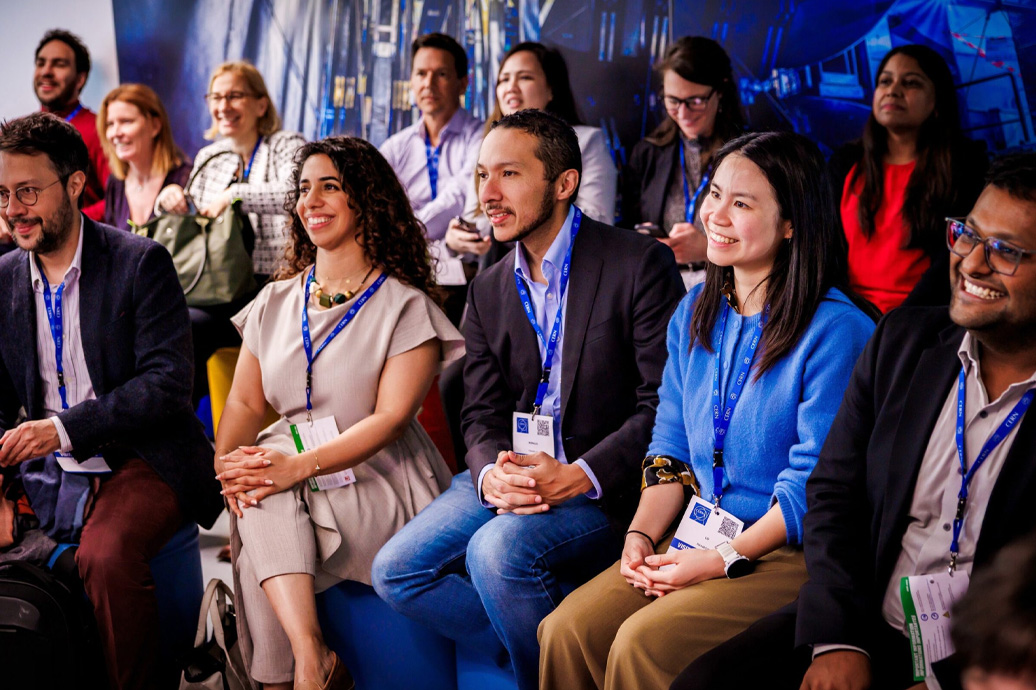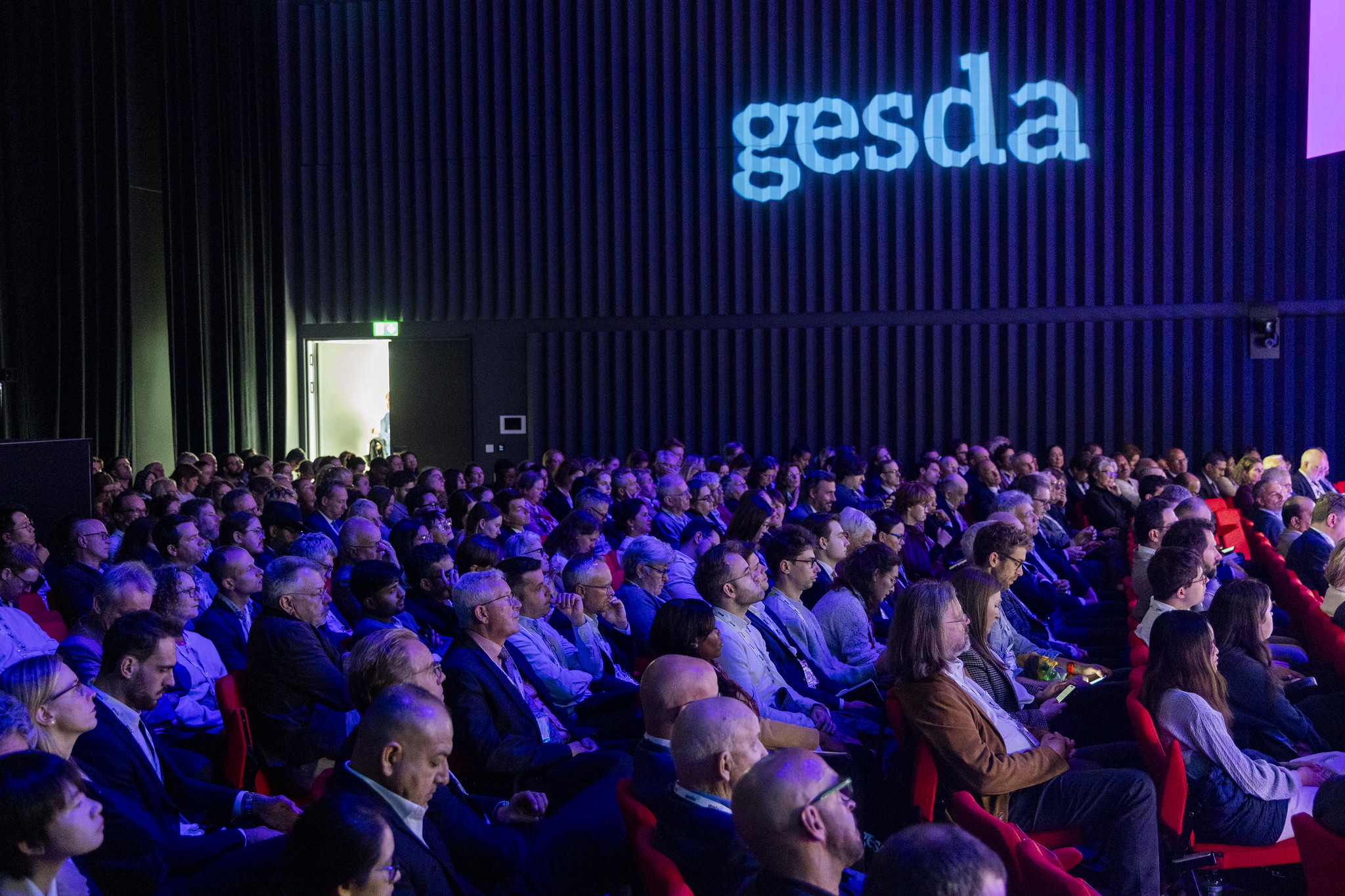On CERN Day, scientists and senior leaders explained how the world’s largest particle physics laboratory serves as a bridge between science and diplomacy. A role playing science diplomacy game introduced the work of the Open Quantum Institute, a groundbreaking initiative by GESDA and CERN.
The visit to CERN, the French acronym for the European Organization for Nuclear Research, began with an overview of the history and operations of the treaty-based intergovernmental organization, which dates to 1954. CERN was a forerunner of modern science diplomacy, serving as a haven for British and German scientists to collaborate for the first time in the wake of the Second World War.
Story by John Heilprin | Photos by Marc Bader/GESDA
In Geneva’s multilateral ecosystem, CERN is a model of the combined uses of science and diplomacy, bringing together 24 member nations and 14 other nations or organizations with associate member or observer status to conduct nuclear research at the world’s biggest atom smasher. It also has 50 cooperation agreements and works closely with GESDA and several other Geneva-based institutions. As of the start of this year, CERN had 2,704 staff, 1,181 graduates, and 13,502 associates, and an annual overall budget of over CHF 1 billion ($1.2 billion).

During seven decades of scientific cooperation, CERN’s discoveries about the fundamental building blocks of matter and the universe – including the Higgs boson particle in 2012, almost a half-century after it was first proposed – have also led to key inventions such as the World Wide Web, computer chips, and touch screens. The organization’s fundamental science isn’t driven by market needs, however, “so the idea is not to commercialize,” said Giovanni Anelli, CERN’s Head of Knowledge Transfer Group. “What we are here for is to do the science.” 
Charlotte Lindberg Warakaulle, CERN’s Director for International Relations, showed a slide depicting dark space that Fabiola Gianotti, the Director-General of CERN, often uses in her presentations to illustrate concepts related to particle physics and cosmology, particularly when discussing the search for dark matter and dark energy. “This is a beautiful image that’s been brought back by the James Webb Space Telescope,” she said. “Some of the most effective science diplomacy happens in the dark.”
CERN tries to tailor its programs to support the advancement of the UN’s 17 Sustainable Development Goals (SDGs) for 2030, and has identified seven with which it believes it can be of particular help: five for health, education, gender, energy, and innovation, and two for international cooperation. Archana Sharma, CERN’s Senior Advisor for Relations with International Organizations, shared her reflections as a mentor. She described the work that CERN does inspiring young students and serving as a bridge between science and diplomacy.

A globally recognized scientist for her pioneering work on micro-pattern gaseous detectors, Sharma played a role in the discovery of the Higgs boson particle and received one of India’s most prestigious awards for her contribution to science and technology. Thousands of students have launched careers in academic, industry and government work after spending time at CERN exploring what lies beyond the Standard Model of particle physics. “These are people who then become leaders in their countries. They are leading laboratories in their countries,” she said. “So there’s a lot of complementarity to what we do.”

On a tour of the facilities around the Large Hadron Collider (LHC), which runs for 27 kilometers some 100 meters beneath the Swiss-French border near Geneva, the cohort learned about the accelerators, detectors and computers needed to study the collisions of particles accelerated close to the speed of light. The LHC produces more than 1 billion particle collisions per second for the giant detectors to record the particles formed at the four collision points. A worldwide LHC computing grid (WLCG) has 1.4 million processing cores at 170 data centers in more than 40 countries.

CERN also works closely with GESDA to support the Open Quantum Institute (OQI), GESDA’s most advanced initiative. The day included an interactive role playing game, based on a future scenario, that serves as an introduction to the OQI, launched at CERN in 2024 with the support of UBS. 
The scenario for the Quantum Diplomacy Game is set in the mid-2030s, when one country has achieved a monopoly on large-scale quantum computing, and produces two-thirds of the most critical material needed for it. Other countries want this technology to curb global greenhouse emissions, but their goals are obstructed when the monopolistic country imposes export controls on its quantum-related goods and services.

Once a vaunted technological breakthrough, quantum computing turns into an international crisis among the corridors of power in nations’ capitals, corporate offices, and academic circles, and a severe crisis rankling the highest levels of the UN and other international organizations. After breaking into groups, the cohort saved the world by hammering out a deal for sharing technology and intellectual property, using what participants described as a (mostly) “remarkably civil” process that included “stall” tactics, a bit of “bias,” some “give-and-take,” and the bargaining chip of a vast reserve of limestone.
The game illustrates opportunities for quantum diplomacy and provides an immersive experience in anticipating pathways for solutions. “We are cross-pollinating the work we do at GESDA and the work we do at the OQI,” said Marianne Schörling, a Senior Program Manager for GESDA who has been working on the OQI since its incubation and launch. “Ultimately, we are building a community of anticipatory leadership champions.”
Photos By Michael Chiribau/UNITAR















